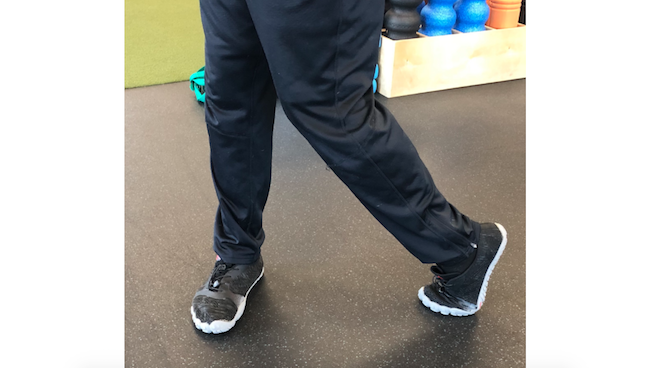Should You Perform Rotational Training?
2019-12-22
I come from a family that is full of teachers. My Mom was a teacher, my Dad was a teacher, my grandmother, and aunt…you start to get it. That is where my passion to write our DVRT blogs come from. Nowadays, I realize that people do look to the internet to learn. While there are pros and cons to it, the biggest challenge is being able to filter the good training information from the bad! Don’t get me wrong, that is NOT easy to do!

A great example is the confusion that still surrounds rotational training. People looking for attention on the internet can make things seem REALLY hard to figure out. Do we rotate, do we not, do we ONLY rotate, is that a rotational exercise? These are all of the many questions that probably causes people to be only left to scratch their head more!
Why is rotational training such a place for great confusion? My guess is that it isn’t as entrenched in the bodybuilding world that most training still derives a lot of its ideas from. Rotational training, from a bodybuilding perspective, isn’t extremely meaningful. Mostly because we can’t point to ONE muscle that is responsible for the movement. It is THIS reason that rotational training is a concept that I love to discuss because it has so many elements that represent higher levels of functional fitness.
I wanted to try to make a complex subject a bit easier to digest so I thought we would address some of the biggest questions and ideas that become misunderstood.
Do We “Twist” or Rotate
A big lesson I have learned over the years is that words matter! When you say “twist” to someone they tend to think about rotating their trunk. This is actually VERY different than rotational training. How so?

The best way to explain is through renown strength coach, Mike Boyle and physical therapist, Gray Cook’s “Joint by Joint Approach”. This model is meant to simplify some important concepts. Basically, our body has alternating joints that have a dominance towards mobility and stability. Your feet create stability, ankles mobility, knees stability, hips mobility. Makes sense when you look at the type of joints that are each of these locations on our body.
However, when we get to the spine that gets a bit more interesting. Our lumbar spine is meant for stability, the thoracic is more mobility, and the segments of the neck are stability and mobility. For the sake of our conversation, let’s focus on the fact that the lumbar is stability and we have mobility in the thoracic spine and hips. Think that tells us anything about our rotational training?
You may guess that we actually want rotation to occur from the hips and NOT the low back. With about only 14 degrees, at most, of rotation in the lumbar spine, this structure is designed for true stability. That is why we spend a lot of time building concepts of rotational training through understanding how to create force from the ground up!
Even though the hip has the biggest potential for rotation in the lower body, the creation of rotation is initiated much farther down the body. As Dr. Chan and Dr. Rudins of the Mayo Clinic explain, “The foot is the ‘root’ between the body and the earth.”

The foot creates what physical therapist Gary Gray would call a “chain reaction” up the body. The foot developing not just a pivot, but force into the ground is what makes our hips rotate as our trunk keeps a “plank.” In other words, we want movement of the hips and stability of the low back. As strength coach Dr. Brandon Marcello states, stability is really about “preventing unwanted movement, while allowing for wanted movement to occur.” That is why rotation is a difficult pattern to develop and has higher levels of complexity.
https://www.instagram.com/tv/B2y6hklH8NH/
Should We Start with Rotational Training for New People?
Context is SO important for answering many common training questions. So, when people ask, “Josh should I teach my clients rotational training?” My answer is yes, but where do we start them and what are they capable of doing is so important.
Because rotational training requires both internal hip rotation (a movement that most people really lack) and is a complex interplay of the body, we actually want to start people with a lot of anti-rotational training movements. In recent weeks I’ve been talking with renown fitness expert, Alwyn Cosgrove, and we’ve discussed if “anti” is a good way to phrase things.
As I said, words matter to people. Alwyn proposed “resisting” more than anti. Mostly because resisting rotation is really what our body is expending a lot of energy doing and is what makes a lot of the movements so challenging. Why start there though and why do they matter?
Learning how to control our trunk in resisting unwanted movement as we create movement with our hips is actually a pretty advanced skill. First learning how to use the whole body to resist unwanted movement raises our ability to then layer in how to keep one area mobile while another stable. This is really one of the many aspects that makes functional training SUCH a departure from more bodybuilding based programs. Which muscles are used? A LOT of them!
https://www.instagram.com/p/B3pOlZinn2X/
DVRT UK Master, Greg Perlaki, breaks down some great progressions, but also concepts of learning how to resist rotation before we get to more advanced rotational training. This is just some of MANY layers we build.
Aren’t I Going To Hurt My Low Back In Rotational Training?
People sometimes see our more advanced DVRT rotational training exercises and get very concerned that they are going to get hurt! Listen, I actually appreciate people wanting to be safe and mindful if an exercise is really worth the risk. However, what people often miss is how we build layers to rotational training that makes these exercises not risky at all!
Should we be concerned with rotational training hurting one’s low back? Depends on your system of teaching such concepts. Yes, rotation and flexion of the lumbar spine is one of the EASIEST ways of hurting your low back. That is why we take so many steps in teaching how to control the movement before we get to advanced exercises. The BIGGEST key is teaching proper footwork and core control when our body is in a more upright posture as DVRT Master, Cory Cripe breaks down.
https://www.instagram.com/tv/B0jXB16n9cd/
Learning these concepts of movement gives us a GIANT playbook of both exercises that help us build the ability to resist rotation as well as produce it. The MOST important concept is being able to see is an exercise resisting or producing rotation? When you understand how the body creates movement and think about the ideas we have just discussed it is easy to see and when you do, you can give the RIGHT exercise and purpose to your programs and exercises.
Try yourself to look at the exercises Greg shows and see if you can identify the elements that make the movements resisting or producing rotation. If you have questions about these rotational training drills drop us a line at our facebook group HERE.
Save 20 percent site wide! coupon code “SAVE20” HERE
https://www.instagram.com/p/B6YLRMvFYbD/
Rotational training is paramount to performing true functional fitness. Knowing where to start and where it can go is so important in having success with such training. Any movement, squat, push, pull, hip hinge and so forth, should have a beginning and means of incremental progression. Drills like we show below have that range from more moderate to advanced, the goal showing you where training can go and understanding what we are trying to achieve and the results we want to accomplish.
Don’t miss 20% off our Ultimate Sandbags, Online Education, and DVRT Workouts with code “save20” HERE
https://www.instagram.com/p/CAxWVavDPDK/
© 2026 Ultimate Sandbag Training. Site by Jennifer Web Design.






